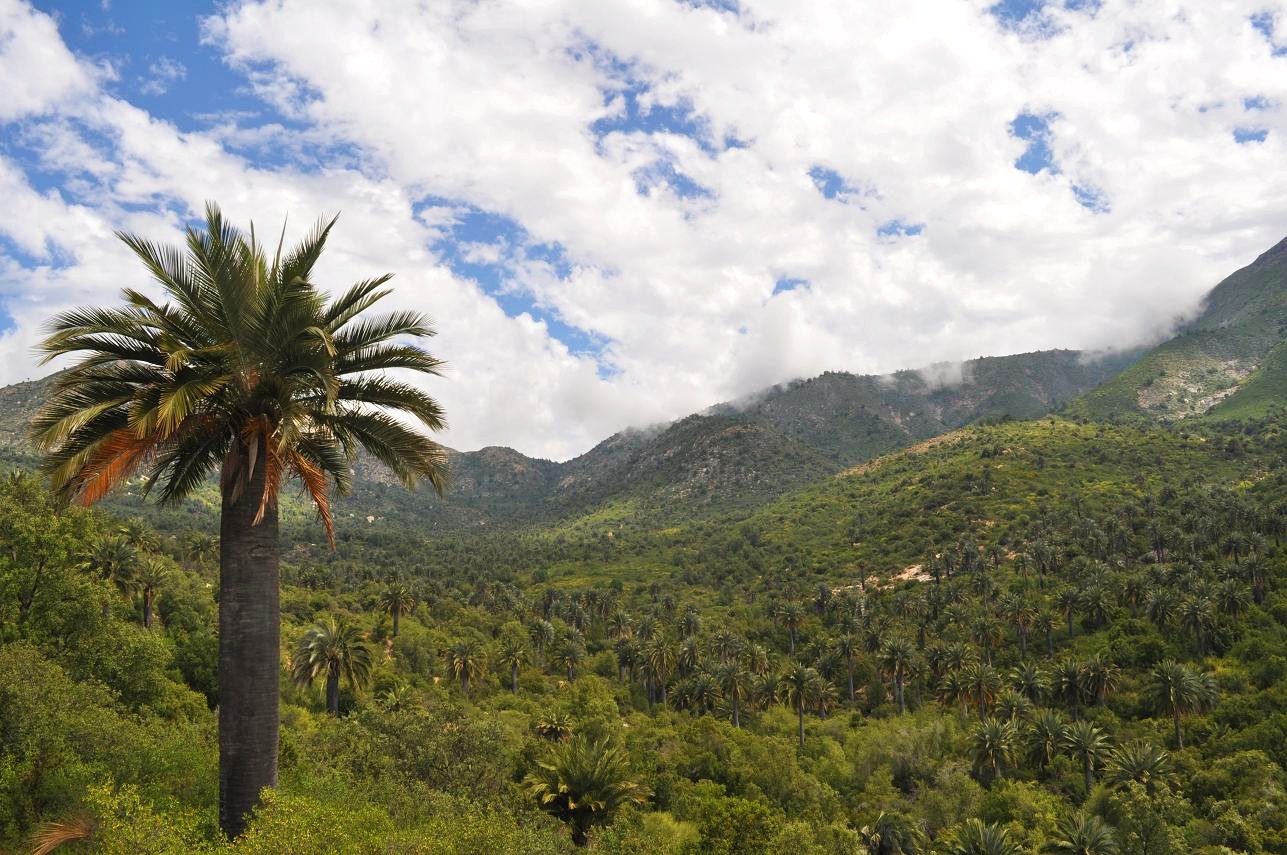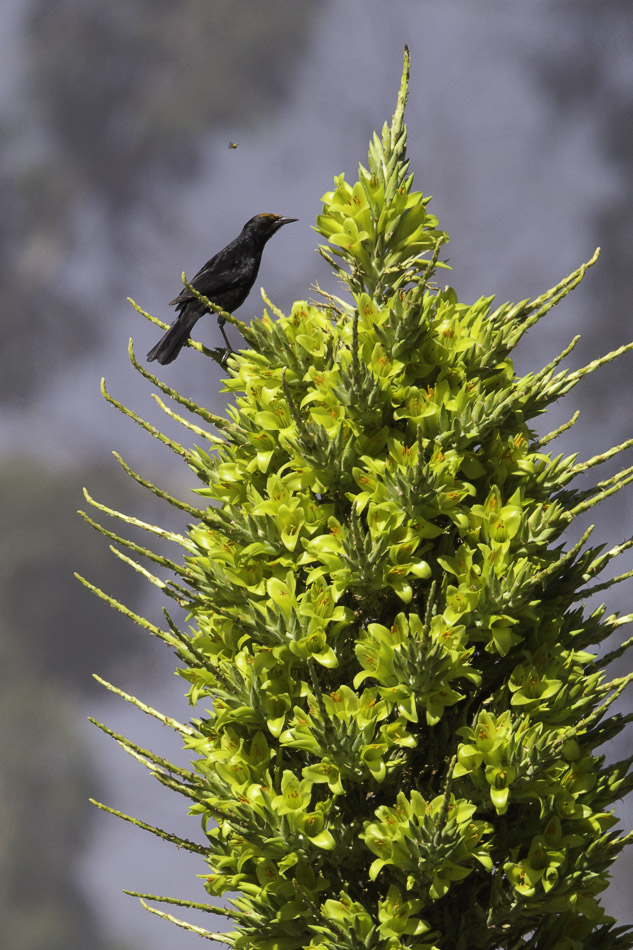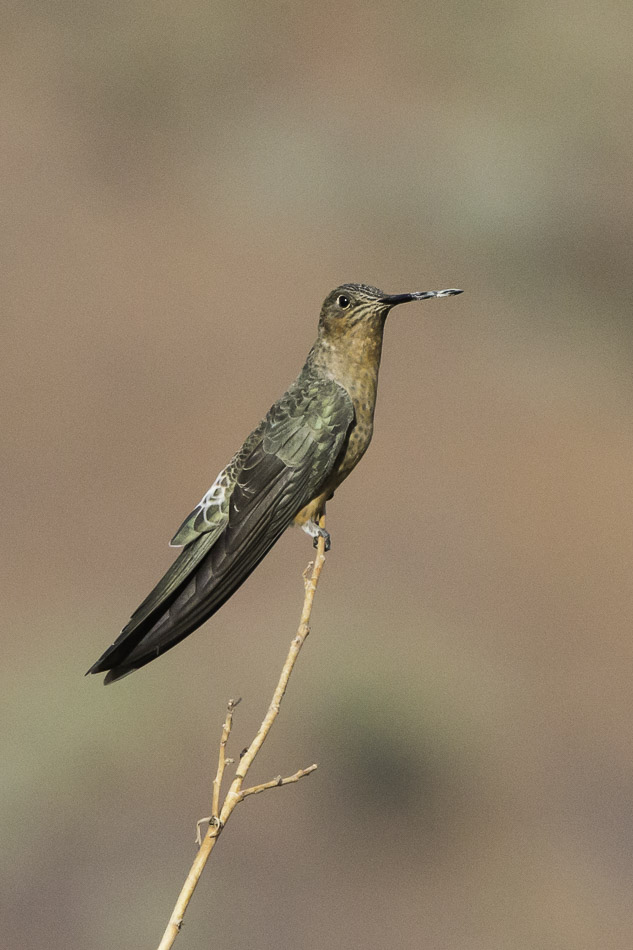A species of Chilean Palm tree has been almost exterminated in the wild by the rapacious destruction of the native woodlands for a super sticky and very tasty treacle.
Fortunately the National Parks authorities in Chile CONAF, have a programme to grow young seedlings and transplant them.
Paula and I whilst on an photography expedition for ‘Living Wild in South America’ found a small nursery of the Palms (Jubaea Chilensis) in the grounds of the Laguna Torca National Park in Central Chile.
We were attracted to the flowering spike of one of the Palms as there was a Shiny Cowbird taking nectar from the florets. Each time the bird dipped its head into the flower head, pollen was deposited on its head. We saw the bird go to several flowers and thus the bird was acting as a pollinator.

The Chilean Wine Palm is so named because a strong beverage like treacle can be made from the sap from its trunk, unfortunately to do that one has to cut down the tree. This photograph was taken in one of only two locations where the Chilean Palm grows in the wild, the La Campana National park in the Andean foothills, N.W of Santiago.
Charles Darwin climbed to the top of Cerro La Campana (1828 m) on July 16th 1834, I quote from his writings ” These palms are, for their family, ugly trees. Their stem is very large, and of a curious form, being thicker in the middle, than at the base or top. They are excessively numerous in some parts of Chile, and valuable on account of a sort of treacle made from their sap. Every year in the early spring, in August, very many are cut down, and when the truck is lying on the ground, the crown of leaves on the top is cut off. The sap then immediately starts to flow from the upper end and continues to do so for many months. The sap is concentrated by boiling , and is called treacle, which it very much resembles the taste”
Since Darwin’s time the area has been a magnet for nature, wildlife lovers and birdwatchers and the national Park is one of the most visited in Chile. It was declared a National Park in 1967 and a UNESCO Biosphere Reserve in 1985 and is a wonderful location to see the Giant Hummingbird.
The Giant Hummingbird i s also known to pollinate the Chilean Palm.


